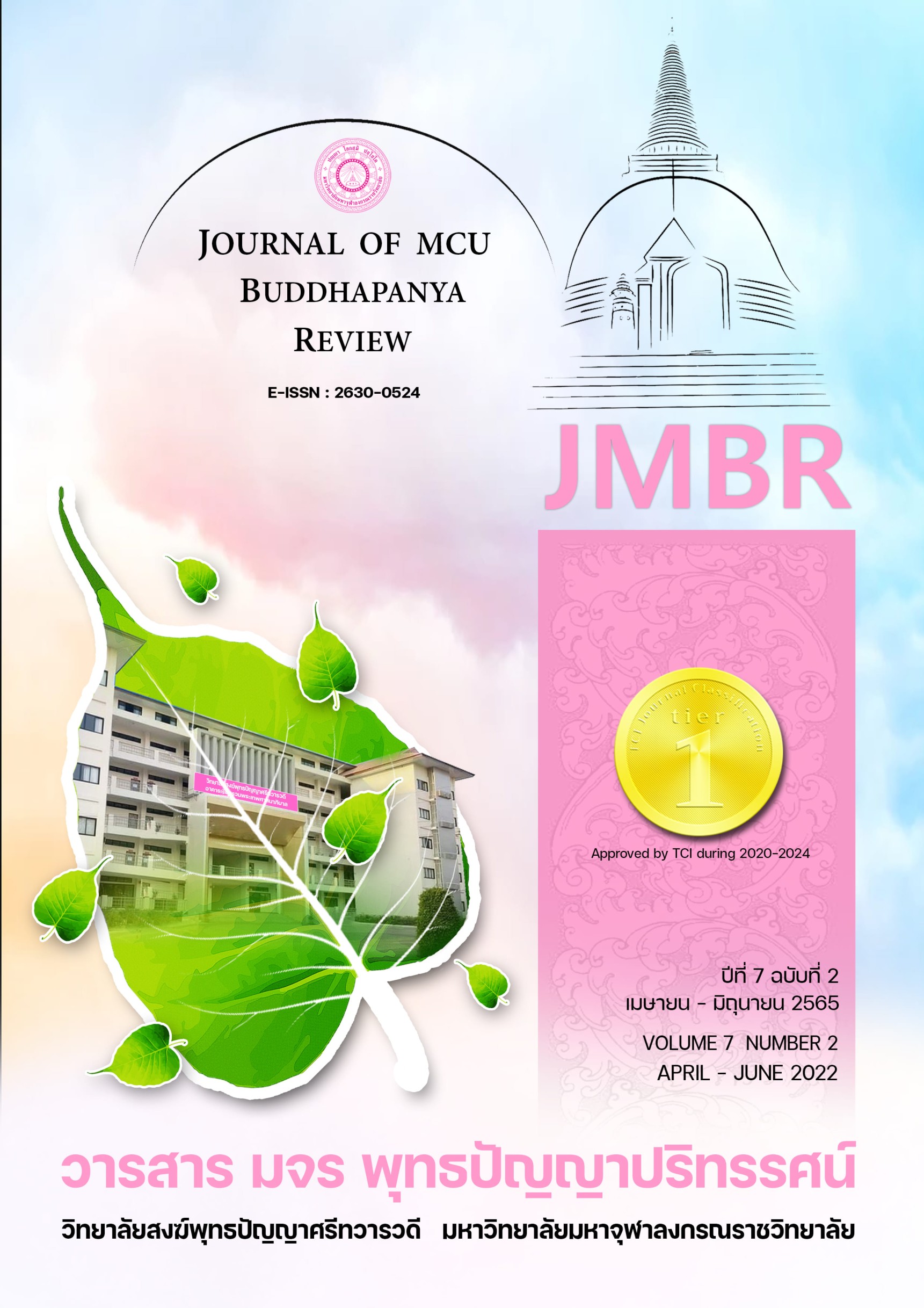ความสัมพันธ์ของคำเรียกชื่ออาหารกับความเชื่อและค่านิยม ของคนไทย 4 ภาค
คำสำคัญ:
อาหารไทย, ความเชื่อ, ค่านิยม, อรรถศาสตร์ชาติพันธุ์บทคัดย่อ
บทความวิจัยนี้เป็นการศึกษาตามแนวคิดอรรถศาสตร์ชาติพันธุ์ และเพื่อศึกษาแนวคิดด้านความเชื่อ และแนวคิดด้านค่านิยมเป็นกรอบการวิจัย ก่อนการลงพื้นที่เก็บข้อมูลภาคสนาม ผู้วิจัยจะทำการเก็บรวมรวมข้อมูลรายชื่ออาหารจากเอกสารกลุ่มตัวอย่าง จากนั้นจัดทำแบบสอบถามที่ใช้ในการเก็บข้อมูลเพื่อสอบทานกับข้อมูลที่ได้จากผู้บอกภาษา คือ ตัวแทนประชากรทั้ง 4 ภาคของประเทศไทยโดยคัดเลือกมาภาคละ 3 คน รวมทั้งสิ้น 12 คน ผู้ให้ข้อมูลสำคัญประกอบด้วย ปราชญ์ชาวบ้าน และผู้เชี่ยวชาญด้านอาหารและวัฒนธรรม โดยใช้วิธีการเลือกแบบเจาะจง และการสัมภาษณ์และสังเกตอย่างมีส่วนร่วมเป็นเทคนิคหลักในการเก็บรวบรวมข้อมูล เครื่องมือที่ใช้ในการวิจัยมี 2 ชนิด คือ 1) แบบสัมภาษณ์ 2) แบบสอบถามวิเคราะห์ข้อมูลโดยใช้สถิติพื้นฐานการหาค่าร้อยละในการแปลแบบสอบถาม จากนั้นวิเคราะห์เนื้อหาและนำเสนอข้อมูลเชิงพรรณนาวิเคราะห์
ผลการวิจัยพบว่าคำเรียกชื่ออาหารไทย 4 ภาค สะท้อนให้เห็นความเชื่อที่เป็นส่วนหนึ่งของระบบศาสนาใหญ่หรือศาสนาประจำชาติ ได้แก่ ความเชื่อด้านพุทธศาสนาแบบชาวบ้าน และความเชื่อพื้นบ้าน ได้แก่ ความเป็นมงคล และความอัปมงคล นอกจากนี้ยังพบค่านิยมของคนไทย 2 ประการ ประกอบด้วยค่านิยมทางสังคม ได้แก่ วิถีชีวิตเรียบง่าย รักถิ่นฐาน มีความสามัคคี ปรารถนาความยืนยาว ค่านิยมทางศาสนา คือ มีความศรัทธาในพุทธศาสนา องค์ความรู้จากงานวิจัยนี้ทำให้เข้าใจความรู้สึกนึกคิดของประชาชนทั้ง 4 ภาคของประเทศไทยทั้งความเชื่อด้านพุทธศาสนา และความเชื่อด้านความเป็นสิริมงคล รวมถึงยังแสดงให้เห็นค่านิยมทางสังคม และค่านิยมทางศาสนา ของคนในสังคมไทยได้เป็นอย่างดี
เอกสารอ้างอิง
Autsanee Thuwachot, Chumsak nararutwong and Somchok Khunsanong (ed.). (2013). Thai food culture: The South. Bangkok: Office of Printing Works, Veterans Affairs Organization under the Royal Patronage.
Boonlert Wiwan. (2015). Isan culture that appears in the novel "Khru Ban Nok". Journal of Korean Association of Thai Studies. 22(1): 1-34.
Chanokporn Angsuwiriya. (2012). An Ethnamatic Analysis Study of Food Naming in Hatyai District Songkhla Province (Research Report). Songkhla: Prince of Songkla University.
Department of Cultural Promotion. (2013). Thai food identity in 4 regions. Bangkok: Agricultural Cooperative Association of Thailand.
Department of Religious Affairs. (2009). Rituals and Traditions. Bangkok: Agricultural Cooperative Association of Thailand.
Frake. C. O. (1980). Language and Cultural Description: Essays. California: Stanford University press.
Hai Ning Zheng. (2012). The Study of Naming Thai Mountain. (Master of Arts). Kasetsart University, Bangkok.
Kingkeaw Attakorn and Thanarut Sirisawas. (1985). Thai Studies Teaching Material Series: civilization book 2. Nonthaburi: Sukhothai Thammathirat Open University.
Kingkeaw Attakorn. (1976). folklore. Bangkok: Department of Teacher Training.
Ladapha mortero. (1994). Encyclopedia of Thai Local Food Wisdom 4 Regions. Bangkok: Office of Bio-Based Economic Development.
Lampang Cultural Office. (2020). Tan khao lam – khao ji. Retrieved from https://www.m-culture.go.th/lampang/ewt_news.php?nid=2168&filename=index
Mgronline. (2021). Food believe in 4 region. Retrieved from https://mgronline.com/qol/detail/
Mongkhon Sittilhor and Somchok Khunsanong (ed.). (2013). Thai food culture: The North. Bangkok: Office of Printing Works, Veterans Affairs Organization under royal patronage.
Nakhonsrithammarat Cultural Office. (2019). The Festival of the Tenth Lunar Month.Retrieved from https://www.mculture.go.th/nakhonsrithammarat/ewt_news.php?nid=658&file
name=index.
Nhischarnun Nunthadsirisorn. (n.d.). From “Pete object to “Lao Cha-on”. Retrieved from https://chula.academia.edu/NhischarnunNunthadsirisorn
Nida, E.A. (1975). Componential Analysis of Meaning. Mouton: The Hague.
Phenix. (1996). Social Values. New Jersey: Prentice-hall.
Pranoom Krangthoong et al (ed.). (2013). Thai food culture: The Central region. Bangkok: Office of Printing Works, Veterans Affairs Organization under royal patronage.
Royal Academy. (2013). The Royal Institute's Dictionary, 2011. (2nd printing). Bangkok: nanmee books.
Sasithorn Sinthawornkul. (2004). Thai ways of eating and beliefs as reflected in the names of Thai foods used in traditional ceremonies and festivals (Master of Arts). Bangkok:Chulalongkorn University.
Sengarun Kanokphongchai. (2001). Food: Thai esset. Bangkok: Sangdad press.
Somchai Sumniengngam. (2002). Linguistic characteristics indicating change in the belief in auspiciousness and inauspiciousness in Thai names. (Doctoral of Arts). Chulalongkorn University, Bangkok.
Tawach poonnotok. (1982). Regional Literature. Bangkok: Odian store.
Thaweethong Hongwiwat. (1998). Food and health in culture. Bangkok: Sangdad press.
Thaywan Thaneerut, Maitree Sutthajit, Winai Keawmuneewong, Sripri Ploysub, Napas Keawwichian and Chawida Suknirun (ed.). (n.d.). food for health. Bangkok: Office of Printing Works Veterans Organization.
Vajirayana. (2020). Chapter 12 Sriprachan gives Wanthong to marry Khun chang. Retrieved from https://vajirayana.org.
Vinyoochon Howtragool, (2017). A Study of The Belife on Petain Sart Duan Sib Tradition: A Case Study of Population in Muang District of Nakhon si thammarat Province. Nakhon Lampang Buddhist College’s Journal, 6(2): 9-18.
ดาวน์โหลด
เผยแพร่แล้ว
รูปแบบการอ้างอิง
ฉบับ
ประเภทบทความ
สัญญาอนุญาต
ลิขสิทธิ์ (c) 2022 วารสาร มจร พุทธปัญญาปริทรรศน์

อนุญาตภายใต้เงื่อนไข Creative Commons Attribution-NonCommercial-NoDerivatives 4.0 International License.



